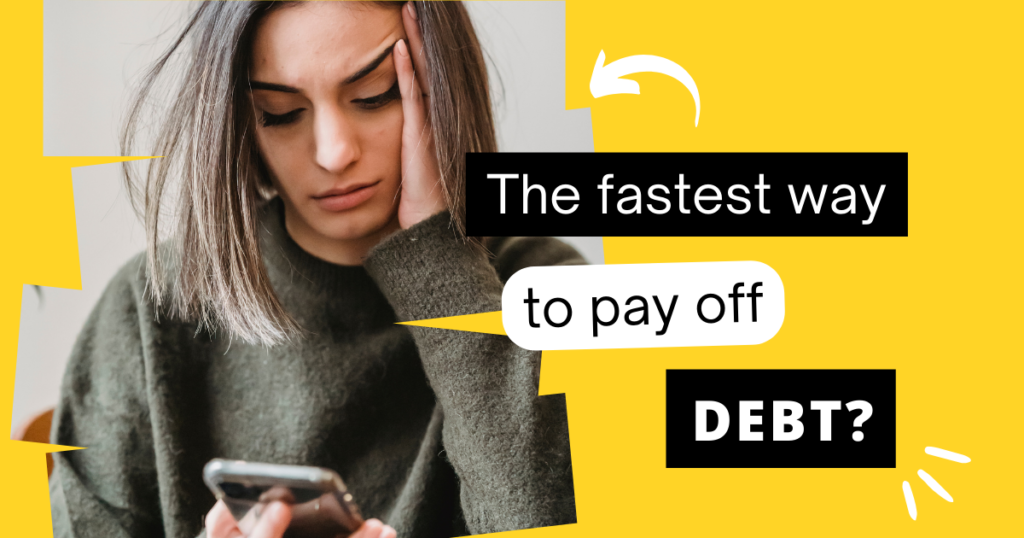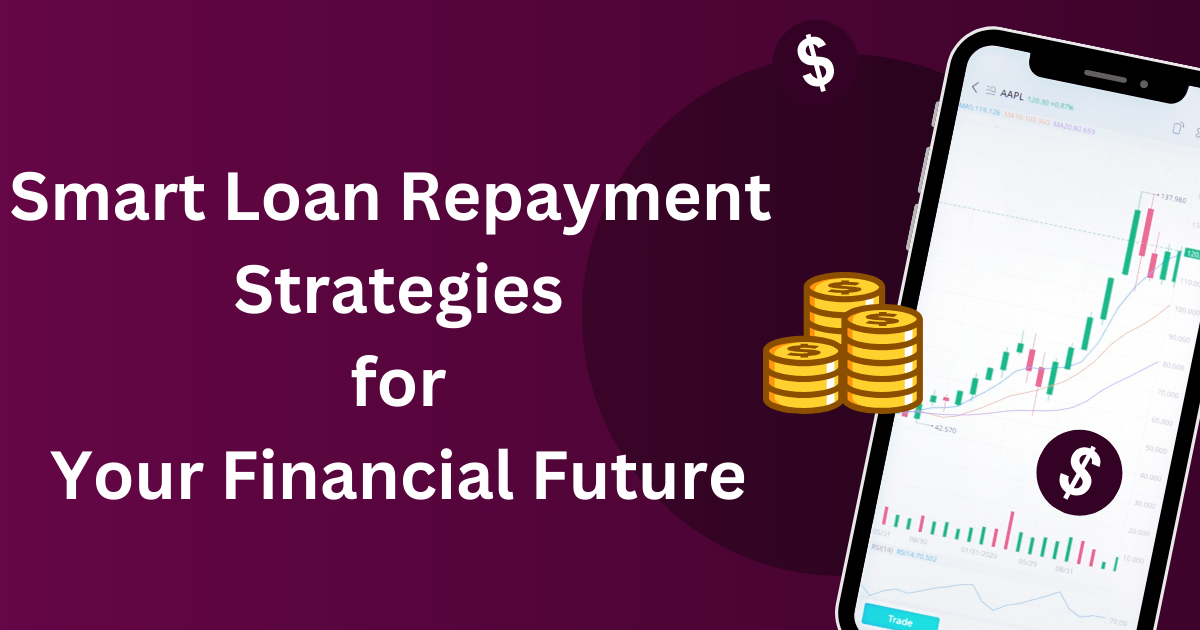Managing debt is a critical aspect of financial health, and how you repay your loans can significantly impact your financial future. Whether you’re dealing with student loans, credit card debt, a mortgage, or other forms of debt, having a solid repayment strategy can save you money, reduce stress, and help you achieve financial freedom more quickly.
In this guide, we’ll explore smart loan repayment strategies tailored to different types of debt, provide actionable tips for prioritizing payments, and discuss how to avoid common pitfalls. With the right approach, you can take control of your debt and build a stronger financial foundation.
Understanding Your Debt

Before diving into specific repayment strategies, it’s essential to have a clear understanding of your debt. Start by taking an inventory of all your loans, including:
- Loan Type: Identify the type of each loan, such as student loans, personal loans, mortgages, auto loans, or credit card debt.
- Interest Rate: Note the interest rate for each loan. Higher interest rates typically cost you more over time and may need to be prioritized in your repayment plan.
- Loan Balance: Record the remaining balance on each loan. Knowing how much you owe helps you develop a realistic repayment timeline.
- Minimum Monthly Payment: Understand the minimum amount you need to pay each month to avoid late fees and keep your account in good standing.
- Repayment Term: Be aware of how long you have to repay each loan. Shorter terms mean higher monthly payments but less interest paid overall.
- Loan Status: Check whether your loans are in good standing, deferred, or delinquent. Address any delinquent accounts immediately to avoid further financial penalties.
Having a comprehensive overview of your debt will help you develop a strategic repayment plan that aligns with your financial goals.
Prioritizing Debt Repayment
Not all debt is created equal, and some types of debt should be prioritized over others. Here are some strategies to consider when deciding how to allocate your payments:
- High-Interest Debt First (The Avalanche Method):
- Strategy: Focus on paying off loans with the highest interest rates first while making minimum payments on other debts.
- Why It Works: This approach minimizes the amount of interest you pay over time, saving you money in the long run.
- Ideal For: Individuals with multiple types of debt, particularly credit card debt, which often carries high-interest rates.
- Smallest Balance First (The Snowball Method):
- Strategy: Start by paying off the debt with the smallest balance first, regardless of the interest rate, while making minimum payments on other debts.
- Why It Works: The psychological boost of eliminating a debt can motivate you to continue aggressively paying down your remaining debts.
- Ideal For: Those who need motivation and encouragement to stick with their repayment plan.
- Debt Consolidation:
- Strategy: Combine multiple high-interest debts into a single loan with a lower interest rate, often through a personal loan or balance transfer credit card.
- Why It Works: Simplifies repayment by reducing the number of monthly payments and can lower your overall interest costs.
- Ideal For: Individuals with good credit who can qualify for a lower interest rate and want to streamline their debt repayment.
- Targeting High-Impact Debts:
- Strategy: Prioritize debts that have the most significant impact on your financial health, such as mortgages or auto loans, which are tied to essential assets.
- Why It Works: Ensures that critical assets, like your home or car, are protected by preventing missed payments or default.
- Ideal For: Homeowners and car owners who want to safeguard their assets while managing other debts.
- Income-Driven Repayment Plans (For Student Loans):
- Strategy: Federal student loans offer income-driven repayment (IDR) plans that cap your monthly payment based on your income and family size.
- Why It Works: Makes student loan payments more manageable and may lead to loan forgiveness after 20-25 years of qualifying payments.
- Ideal For: Borrowers with federal student loans who have low income relative to their debt load.
Accelerating Your Debt Repayment
Once you’ve prioritized your debts, you can explore strategies to accelerate repayment and achieve financial freedom faster. Here are some effective methods:
- Make Extra Payments:
- Strategy: Pay more than the minimum payment whenever possible, directing the extra amount toward your principal balance.
- Impact: Reduces the principal balance faster, which in turn lowers the amount of interest you pay over time.
- Tip: Ensure your lender applies extra payments to the principal rather than future payments.
- Biweekly Payments:
- Strategy: Instead of making one monthly payment, make half of your monthly payment every two weeks.
- Impact: Results in 26 half-payments, or 13 full payments, each year—effectively giving you an extra payment annually.
- Tip: This strategy works well for fixed-rate loans like mortgages and car loans.
- Refinance or Renegotiate Terms:
- Strategy: Refinance your loans to secure a lower interest rate or negotiate better terms with your lender.
- Impact: Reduces your monthly payments and/or shortens the repayment term, saving you money on interest.
- Tip: Be mindful of any refinancing fees or prepayment penalties that could offset your savings.
- Increase Your Income:
- Strategy: Boost your income through a side job, freelance work, or selling unused items to generate extra cash for debt repayment.
- Impact: Allows you to make larger payments toward your debt, accelerating your repayment timeline.
- Tip: Consider directing all extra income toward your highest-priority debt.
- Cut Unnecessary Expenses:
- Strategy: Review your budget and identify areas where you can cut back, such as dining out, subscription services, or entertainment.
- Impact: Frees up more money to put toward debt repayment.
- Tip: Reevaluate your budget regularly to ensure you’re staying on track and maximizing your savings.
- Utilize Windfalls:
- Strategy: Apply any unexpected financial windfalls, such as tax refunds, bonuses, or inheritances, directly to your debt.
- Impact: A lump-sum payment can significantly reduce your debt balance and shorten your repayment timeline.
- Tip: Resist the temptation to spend windfalls on non-essential purchases.
Maintaining Good Credit While Repaying Debt
As you work to repay your loans, it’s important to maintain a healthy credit score. Here are some strategies to protect and improve your credit during the repayment process:
- Make On-Time Payments:
- Importance: Payment history is the most significant factor in your credit score. Consistently making on-time payments helps maintain and improve your credit.
- Tip: Set up automatic payments or reminders to avoid missing due dates.
- Keep Credit Utilization Low:
- Importance: Credit utilization—the ratio of your credit card balances to your credit limits—accounts for 30% of your credit score. Aim to keep this ratio below 30%.
- Tip: Pay down credit card balances quickly, even if you can’t pay them off in full.
- Avoid Closing Credit Accounts:
- Importance: Closing credit accounts can reduce your available credit and shorten your credit history, both of which can negatively impact your score.
- Tip: Keep credit accounts open, even if you no longer use them regularly.
- Monitor Your Credit Report:
- Importance: Regularly checking your credit report helps you spot errors or signs of identity theft that could harm your credit.
- Tip: Use free services to check your credit report annually from each of the three major credit bureaus.
- Diversify Your Credit Mix:
- Importance: A mix of credit types (e.g., credit cards, mortgages, auto loans) can positively impact your credit score.
- Tip: If you only have credit card debt, consider adding a different type of loan to diversify your credit profile.
Avoiding Common Debt Repayment Pitfalls
While repaying debt, it’s important to be aware of common pitfalls that can derail your progress. Here are some mistakes to avoid:
- Ignoring High-Interest Debt:
- Pitfall: Focusing on lower-interest debt while ignoring high-interest debt (like credit cards) can lead to paying significantly more in interest over time.
- Solution: Prioritize high-interest debt to minimize overall interest costs.
- Taking On New Debt:
- Pitfall: Accumulating new debt while repaying existing loans can lead to a never-ending cycle of debt.
- Solution: Commit to not taking on any new debt until your current debt is under control.
- Only Making Minimum Payments:
- Pitfall: Paying only the minimum each month extends your repayment period and increases the total interest paid.
- Solution: Whenever possible, pay more than the minimum to reduce your debt faster.
- Not Having an Emergency Fund:
- Pitfall: Without an emergency fund, you may be forced to rely on credit cards or loans to cover unexpected expenses, leading to more debt.
- Solution: Build an emergency fund with 3-6 months’ worth of living expenses to protect yourself from financial setbacks.
- Failing to Communicate with Lenders:
- Pitfall: If you’re struggling to make payments, avoiding communication with your lender can lead to late fees, penalties, and damage to your credit.
- Solution: Reach out to your lender to discuss options like deferment, forbearance, or modified payment plans.
Planning for a Debt-Free Future
As you progress on your debt repayment journey, it’s important to think about what comes next. Here are steps to take as you approach debt freedom:
- Celebrate Milestones:
- Action: Recognize and celebrate each debt you pay off, no matter how small. This helps maintain motivation and a positive mindset.
- Tip: Set rewards for reaching significant milestones, like paying off a credit card or student loan.
- Redirect Payments to Savings:
- Action: Once a debt is paid off, redirect the money you were using for payments into a savings account or investment fund.
- Tip: Consider starting an emergency fund, retirement account, or investment portfolio with your extra cash.
- Reevaluate Financial Goals:
- Action: With your debt under control, revisit your financial goals. Whether it’s saving for a home, retirement, or a dream vacation, use your newfound financial freedom to focus on these objectives.
- Tip: Create a new budget that aligns with your goals and keeps your spending in check.
- Stay Debt-Free:
- Action: Commit to living within your means and avoiding unnecessary debt. Use credit cards responsibly and pay off balances in full each month.
- Tip: If you must take on new debt, do so with a clear repayment plan in mind.
Conclusion
Paying off debt is a challenging but rewarding journey that requires discipline, strategy, and commitment. By understanding your debt, prioritizing payments, and employing smart repayment strategies, you can take control of your financial future. Avoid common pitfalls, protect your credit, and plan for a debt-free life that allows you to achieve your financial goals.
Remember, the path to financial freedom is a marathon, not a sprint. Stay focused, celebrate your progress, and keep your eyes on the long-term benefits of being debt-free. With perseverance and a well-thought-out plan, you can reduce your debt, build wealth, and secure a brighter financial future.
